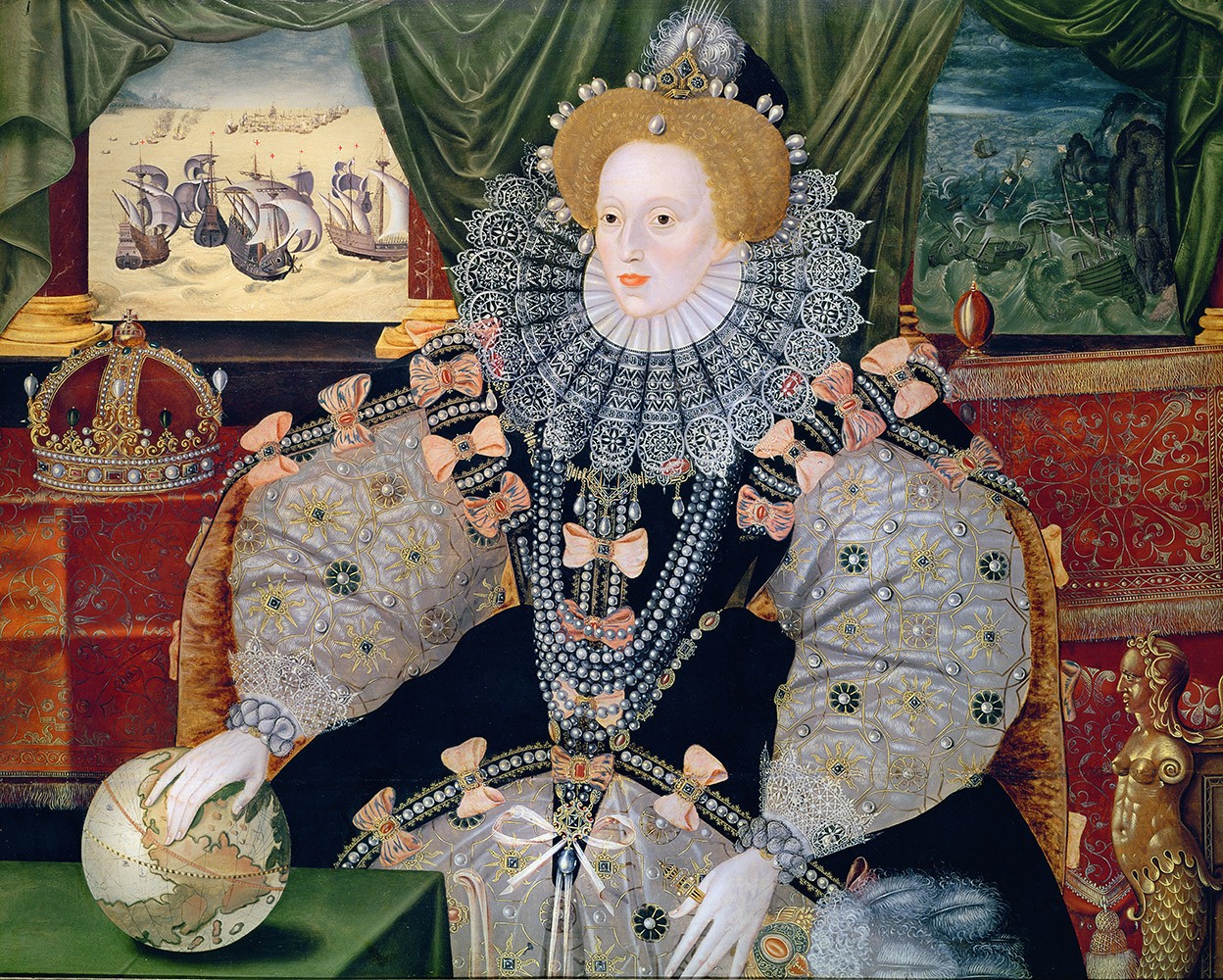What do a South Sea coat of arms, a kangaroo and Elizabeth I
all have in common? They all play a part in the complex narrative of Britian’s Empire
and are all exhibited in the Queen’s House, Greenwich without any labels to explain
their relevance within the history of colonialism.
 |
| South Sea Company Coat of Arms |
With her Uncomfortable Art Tours Alice Procter attempts to
redress this narrative, exposing and analysing such moral gaps within the art
galleries and public collections in England. With a background in postcolonial
art practice and material culture, Procter provides an accessible route into
British colonial history through visual artefacts. Her unofficial tours
currently run at six sites: the National Gallery, National Portrait Gallery,
British Museum, Victoria and Albert Museum, Tate Britain and the Queen’s House.
On each tour, Procter skilfully navigates her way through British art history,
aiming to expose and ‘unravel the role colonialism played in shaping and
funding a major national collection.’
 |
| Alice Procter leads a fascinating and challenging tour |
The relevance of her tours can perhaps nowhere else be as greatly felt as at the Queen’s House whose prize artwork is a painting of Elizabeth I known as the ‘Armada Portrait.’ The Tudor queen sits resplendent in her finery and jewels with one hand placed firmly on a globe. Behind her are windows showing English boats on calm seas and Spanish ships floundering in a storm. The painting was commissioned to commemorate the failed invasion attempt on England by the Spanish Armada in 1588, but ultimately can be read as a symbol of English imperial aspirations. With Elizabethan maritime victory came England, and subsequently, Britain’s involvement in the slave trade. Sir John Hawkins, the founder of the Royal Navy is also thought to be the first English trader to benefit from slavery.
 |
| One of the main attractions in the Queen's House, the Armada Portrait of Elizabeth I |
This is a prominent theme in the Uncomfortable Art Tour of
the Queen’s House. Where there was English success and power, there were
consequences for indigenous people, a side of English history that is not yet
fully acknowledged.
Whereas art lovers may worry that this approach to galleries
would ruin the enjoyment of the collection, the reality is quite different.
Procter’s insights really enrich the experience of the gallery. A large coat of
arms of the South Sea Company could have easily been an overlooked relic.
Instead, Procter questions why there is a figure of a fisherman when the
company was not in fact involved in the fishing but the slave trade. Perhaps
the company used this figure as a euphemism, a tongue-in-cheek reference to
their dealings in slavery, catching people rather than fish. It is a
fascinating – and unsettling- insight into the attitudes towards slavery at the
time.
 |
| In these prints by Stradanus, Native Americans are shown as cannibals. The gallery has not signposted this. |
Procter doesn’t simply analyse the artworks but also their very display. Highlighting countless harmful depictions of indigenous peoples during the explorations of America and Australia, Procter questions why they are displayed without explanation or criticism by the gallery. In one particularly shocking example, in ‘The Discovery of America’ print, the Native Americans are depicted as cannibals. Alongside this print are simply the words ‘these two sets of prints celebrate the inventions and discoveries that shaped early modern Europe.’ In another room, largely fantastical paintings of Australia by the Europeans in 19th century are accompanied by paintings of scientific advancement and a sculpture of Sir Isaac Newton. These curatorial choices are subtle, yet arguably play into the rhetoric of the European man as simply a curious scientist, without regards for the larger impact on indigenous people. Moreover, the word ‘explorer’ is used often, which Procter says paints the colonialists as harmless adventurers.
 |
| Complex paintings of colonialism are contextualised next to scientific advancements and Sir Isaac Newton |
Of course, these issues are often not clear cut, and Procter
encourages debate within her tours. However, it is clear on which side of the
argument her tours sit. Under the name ‘The Exhibitionist’, Procter sells
badges with the phrase ‘Display It Like You Stole It’. Procter’s tours do not
call for the complete overthrow of the art gallery as we know it, but for more
consideration and explanation in displays and exhibitions, with a more nuanced
attitude to British history.
 |
| The 'Display It Like You Stole It' badge |
Whereas many galleries across the west are now recognising
their responsibility, the labels of the Queen’s House remain remarkably silent
on the matter. It may, be uncomfortable, but this reassessment of British
galleries are a necessary in understanding the agenda behind many of our best
known works of art, and our history, at the same time, is brought to life and
becomes more accessible to us as a result.
You May Also Like...




No comments:
Post a Comment